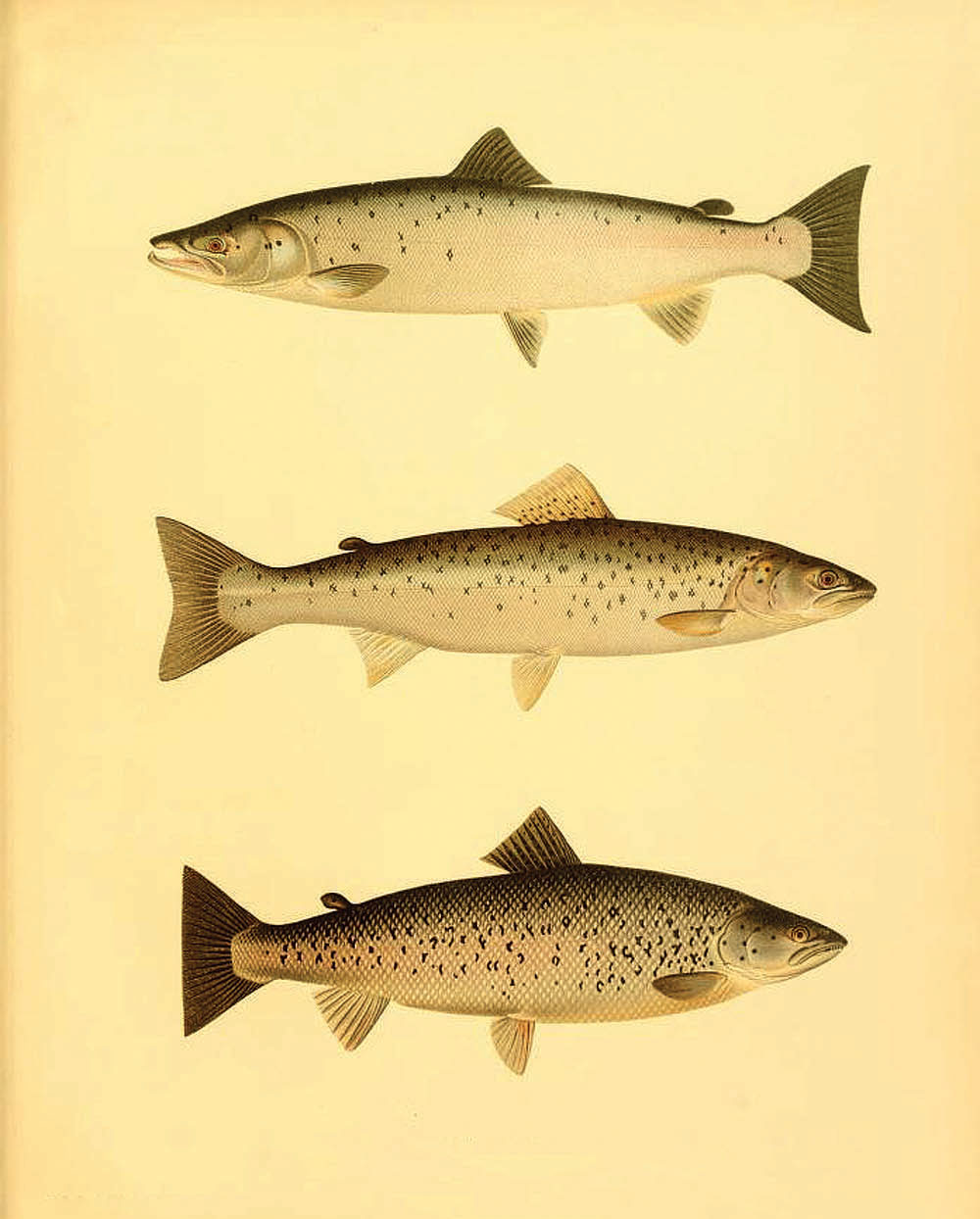
Atlantic salmon was historically reduced to extremely low levels primarily by overfishing and dam construction
Exposure to artificial lighting interferes with the light/dark cycles to which many species have evolved, and can disrupt or alter aspects of migration, navigation, matting, feeding, and predation for a wide variety of wildlife


Atlantic salmon was historically reduced to extremely low levels primarily by overfishing and dam construction
Exposure to artificial lighting interferes with the light/dark cycles to which many species have evolved, and can disrupt or alter aspects of migration, navigation, matting, feeding, and predation for a wide variety of wildlife
Atlantic Salmon
Salmo salar
By Marian Orlousky
Maine is home to the only remaining populations of wild and naturally reproducing Atlantic salmon (Salmo salar) in the United States. Referred to as the Gulf of Maine Distinct Population Segment of Atlantic Salmon, this species has been listed as federally endangered across much of the state since 2000.
The Atlantic salmon is an anadromous fish species. Young are reared from eggs laid by their parents in fresh water streams and rivers. The young grow through the stages of alevins, fry, parr and smolt, at which point they make their way to the ocean where they will mature into adults. After several years spent at sea, the cycle continues with adults returning to spawn in the native freshwaters of their origin.
The Atlantic salmon was historically reduced to extremely low levels primarily by overfishing and dam construction. Recovery of populations is now most heavily influenced by the availability of high-quality habitat. Suitable habitat is dependent on cool, clean, and well-oxygenated water; a diversity of stream substrates offering adequate forage and protection during different life stages; and a lack of physical barriers — such as dams and raised culverts — that prevent adult migration to critical upstream habitat.
Light pollution is an additional factor influencing Atlantic salmon and the health of fisheries in general. Exposure to artificial lighting interferes with the light/dark cycles to which many species have evolved, and can disrupt or alter aspects of migration, navigation, mating, feeding, and predation for a wide variety of wildlife. Rates of predation of young and juvenile fish have been demonstrated to increase under artificial light conditions. Aquatic macroinvertebrates, one of the most important food sources for fish and aquatic vertebrates, shift their feeding behavior and decrease their movement in the water column when exposed to artificial light. These submerged larvae behave as they would during a full moon, staying put in order to avoid predators. This altered behavior leads to less turn-over of nutrients in aquatic systems, fewer emerging adult insects and lower availability of food for aquatic vertebrates. In helping to protect dark skies and forested habitats, the Appalachian Trail is also helping to safeguard high-quality aquatic systems.
The Appalachian Trail crosses about 1,700 streams and 100 rivers from Georgia to Maine. Though today’s visitors to the A.T. are still unlikely to encounter Atlantic salmon while crossing one of these streams, the odds are improving. Work has been ongoing over the last twenty years to restore Atlantic salmon to the Kennebec and Penobscot river systems, tributaries intersected by the A.T. at the Sandy, Carrabassett, Piscataquis, and Pleasant rivers. The Appalachian Trail Conservancy just recently embarked on a new partner project to remove barriers to fish passage along the Henderson Brook in the venerable 100-Mile Wilderness. With the removal of a final hanging culvert in the A.T. corridor, 3.4 miles of the brook already restored by the Appalachian Mountain Club will be re-opened, offering viable habitat that has the capacity to support nearly 1,000 juvenile salmon. Like a thru-hike, the path to salmon recovery in Maine will be long and arduous, but with each step we are a bit closer to realizing that goal.